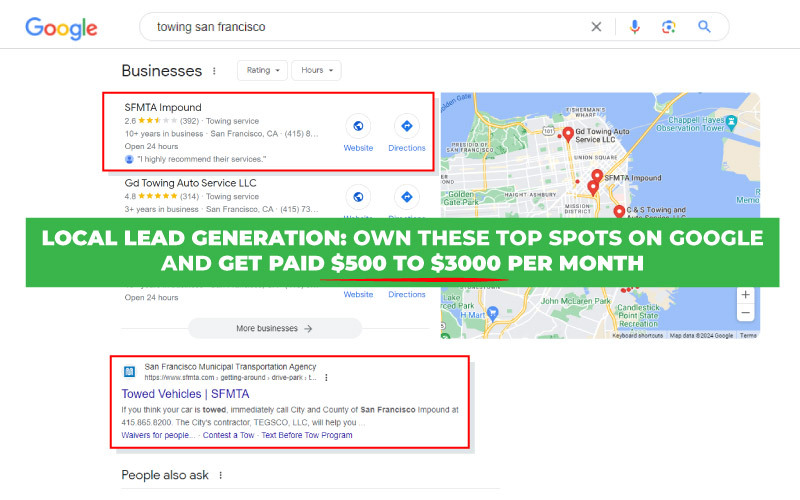
To start glamping business you should:
- Do market research and create a glamping business plan
- Come up with a unique glamping business name
- Pick a good location and choose your accommodation type
- Comply with local requirements
- Create a glamping business bank account
- Prepare your glamping infrastructure
- Decorate and furnish your glamping tent rental
- Set your glamping business pricing
- Start spreading the word about your business
- Hire employees as your business grows
A glamping business can be an excellent idea for those who want to enter the vacation rental industry. You can even run this type of business with your family members. Plus, the great thing is that glamping receives popularity. The 2023 North American Camping & Outdoor Hospitality Report by Kampgrounds of America (KOA), which operates over 500 campgrounds in the U.S. and Canada, reveals that approximately 10.5 million households enjoyed glamping in 2022. This marks a significant increase from the 7.7 million households reported in 2020..
To run a successful glamping business, you’ll have to make your location attractive, comfortable, and suitable for luxury camping. Along with that, you’ll have to be ready and available to work during holidays, weekends, and whenever you receive guest bookings.
Working in the local lead gen is another profitable venture. As with glamping, this is a business you can start and run from home. However, the advantage here is that lead gen doesn't require expensive startup costs, is fairly low risk, and is not as demanding. Besides, your work mostly revolves around ranking and renting websites. Using targeted keywords and locations, your goal is to help these sites reach top search engine results. Once you hit that, you offer the organic traffic and leads to business owners wanting to increase their customer base. Personally, I earn up to $52,000 per month by providing this service to several businesses.
How To Start Glamping Business? (10 Ultimate Steps)
1. Do market research and create a glamping business plan
Connecticut-based insurance firm The Hartford defines market research as “a key component in developing marketing strategy by providing a fact-based foundation for estimating sales and profitability.” As you conduct thorough market research, you will be able to make the best decisions for your glamping business. You can learn about its overall feasibility and even about your direct competitors. This will help you determine how you can position your brand in the market.
In an Operto feature, we read how Hospitality.FM founder and Recreation Vacation Rentals co-founder Will Slickers pointed out that having few competitors in an area can only mean one of two things. According to Slickers, “Either there is an untapped market that you are about to make the most of, or there are complications for creating a glamping business in your desired location that you aren’t yet aware of.”
Meanwhile, creating a business plan is also an important step you shouldn’t skip before establishing your glamping site. This will serve as your guide as you launch and operate your glamping business. Plus you can use the document to help prospective investors understand your vision.
Generally, a business plan should include the following:






2. Come up with a unique glamping business name
Your brand name will help you build your business identity, so it should represent your company’s objectives. More importantly, it should be simple, easy to remember, and sets you apart from competitors. That way, satisfied guests can refer you to friends and fellow glampers. If possible, avoid having a location-based brand name because it can potentially limit opportunities for future expansion.
Forbes also reminds entrepreneurs about checking a name’s availability before officially using it. According to the business magazine, looking up websites and social media channels can help you avoid the headaches that come with using an existing brand name. In addition, performing a quick search on the United States Patents and Trademark Office (USPTO) website can also be an excellent solution.
3. Pick a suitable location and choose your accommodation type
As with most businesses, location is a crucial factor for attracting potential guests and succeeding in the industry. Landowners can use their own properties for establishing their glamping sites, while non-property owners can instead rent land. It can be an advantage if you’re located near local tourist attractions. However, remote areas are also a favorite among avid glampers since they provide fun, outdoor experiences that allow them to be closer to nature.
With your location ready, it’s time to get tents for your businesses. Remember that you can’t use ordinary camping tents. Typically, tents used for glamping are bigger, more luxurious, and are of higher quality. Some of the most popular tents for glamping include bell tents, cabin tents, glamping domes, safari tents, tipis, and yurts. Alternatively, you can also use glamping pods, gypsy caravans, shepherd huts, and tree houses, among other options.
When buying tents, you can check out local sellers or browse online shops to find the best deals. Compare features, sizes, prices, and reviews to help you decide. It’s always a great idea to buy spacious and sturdy tents that can withstand the elements.
4. Comply with local requirements for your glamping business
Laws and regulations usually differ from one location to another, so it’s always best to check with local government offices. Visit their official websites and look up information about the required licenses and permits for glamping businesses in your area.
Before you can officially operate your glamping business, you may need to:




5. Create a glamping business bank account
Opening a separate bank account for your business brings several advantages. For instance, it makes your business trustworthy and legit. More than that, it can help you stay legally compliant and can simplify the tax preparation process. You get to track the flow of your business income and expenses with greater ease. Also, you get to protect your personal assets by keeping it separate from company finances.
6. Prepare your glamping infrastructure
With the business requirements out of the way, you can proceed to preparing your glamping site. Your goal is to keep the area tidy and equip it with modern amenities and facilities. Start cleaning the spot where you plan to pitch your tents. Get the landscaping done and install electricity in the area. Provide power outlets and extension cords for appliance usage and recharging gadgets. Prepare private bathrooms and toilets to ensure guests a comfortable experience during their stay. For best results, hire professionals to handle most of these tasks.
7. Decorate and furnish your glamping tent rental
Decorating and furnishing your glamping business is key to creating a luxurious, memorable experience that attracts guests. Start by choosing a theme that appeals to your audience, like rustic chic or modern minimalism. Invest in durable, high-quality tents and furnish them with comfortable beds, plush linens, cozy seating, and storage solutions. Add essential amenities such as good lighting, heating, cooling, and a reliable power supply. Enhance the ambiance with textiles, artwork, and plants.
You should create an inviting outdoor spaces with decks, seating, and fire pits. Also, ensure practical functionality with clean bathroom facilities and kitchenettes, and prioritize safety with fire extinguishers and first aid kits. Guests love this setup because it combines the adventure of camping with the comforts of home. For example, they often rave about the cozy bedding and stylish decor that make them feel like they're in a boutique hotel surrounded by nature.
Some popular decorations you can use are:
8. Set your glamping business pricing
Glamping businesses usually charge guests per night, so decide how much you want to earn for your services. Try to come up with an attractive yet reasonable price range. You can do your research and check out the rates of other local glamping sites to get an idea. As with most vacation rental businesses, you may have to charge differently on weekdays, weekends, and holidays.
9. Start spreading the word about your glamping business
Create pages on Facebook, Instagram, Twitter, and other relevant social media channels. List your business with glamping platforms like Airbnb, Booking.com, FlipKey, Glamping.com, GlampingHub, Hip Camp, Pitchup, The Dyrt, and Vrbo. By doing so, you get to attract attention from your target market.
10. Hire employees as your glamping business grows
Hiring people can be a big advantage. It can help you achieve greater work-life balance plus you get to focus more on growing your business. Case in point, solopreneur Kenny Young founded Pitched Glamping in Minneapolis in March 2020. He opened a second location in Phoenix several months later. In a Business Insider interview, Young shared how he eventually decided to hire his first staff member to handle day-to-day tasks. The employee’s primary responsibilities were to “visit the storage facility, gather the supplies, and deliver the supplies.”
By tapping professional help, you get to delegate many routine duties that may potentially consume much of your personal time.
What Are the Do’s and Don’ts of Starting a Glamping Business?
DO's of starting glamping business
DO make your campsite Instagram-worthy. Remember that glampers will want to take a lot of photos and videos during their vacation. That’s why it’s crucial that the overall atmosphere of your location looks Instagrammable.
DO offer entertainment options. This is entirely optional but guests will appreciate it if you can keep them entertained during their spare time. For example, you can provide them with fun board and card games, such as backgammon, checkers, chess, Monopoly, Scrabble, UNO, and others. You can also add a small library of books and magazines. If you’re catering to families, you may also want to throw in some children’s storybooks and comic books.
DO provide a satisfying glamping experience for your customers. Ultimately, what’s most important for you as a glamping entrepreneur is to ensure that your guests leave happy and satisfied. So provide the best amenities and facilities. Be prompt in responding to inquiries. Listen to customer feedback.
DO offer additional services. Aside from providing accommodations, you may also want to offer services that can make the glamping experience more memorable for your guests. Glampers love fun adventures, relaxing activities, and exploring nature, so check out which ones are available and popular in your location. For example, you can offer guided hikes, tours to local attractions, massage services, scuba diving, and spa treatments, among others. Promote these packages on your listings and on your social media postings.
DO market your brand aggressively. Startups in the glamping industry need to promote their brand in order to be found by their target audience. That said, having your own website and social media pages can be a big advantage. You can reach most of your potential guests online.
DON'Ts of starting glamping business
DON’T buy unnecessary things. A common mistake among new glamping entrepreneurs is that they tend to purchase items that they won’t really need for their business. This can result in unneeded expenses that could eat up on your budget. So think twice before taking advantage of sale items you find online if they will only end up piling in your storage room.
DON’T try to do everything yourself. Managing a backyard glamping site can be time-consuming if you do it all yourself. Involving family members can be the key to minimizing stress. As mentioned, you can also outsource certain jobs to professionals. For example, you can hire virtual assistants to handle customer support or social media marketing duties on your behalf.
DON’T ignore market trends. While running your business, you also want to pay attention to glamping market trends. Check out what local competitors are doing to attract more guests and see how you can incorporate their strategies into yours. What new services and experiences are they offering? Also, what digital marketing tactics are they using? You can always learn much from others so don’t be complacent, even if you think you’re already doing well in the industry.
DON’T ignore negative reviews. Sooner or later, you will receive reviews from your customers - and not all of them will be positive. When you do get negative ones, it’s important to respond in a polite, respectful manner. Ignoring them may only damage your reputation in the glamping community. Admit if you’re at fault and apologize, if necessary. Ask for a second chance, assuring them you’ll do better. Remember that other potential guests will be reading their reviews and your response, so choose your words carefully. Whether you get booked or not by other glampers in the future will likely depend on how you address criticism.
How Much Does It Cost To Start a Glamping Business?
Starting a glamping business can cost you anywhere from $10,000 to $27,000. On average, a startup cost may be around $18,000 or more.
Generally, initial expenses will include business licenses, insurance, furnishings, maintenance, utilities, and more. Also, take note that glamping tents can cost $1,000 to $10,000 each, depending on its type, size, and features.
Here’s a sample breakdown of glamping startup costs from Step By Step Business:

What Is the Startup Glamping Business Income?
The startup glamping income is $150 to $300 per night, depending on their location and the amenities they offer guests. In some areas, glamping entrepreneurs may charge bell tent users $130 to $190 per night during low season or up to $175 to $300 during peak season. Safari tent rates can cost from $160 to $195 per night during low season and up to $260 to $330 during peak season. Domes may cost $300 to $450 per night during low season and $450 to $600 during high season. Meanwhile, average monthly earnings can be up to $5,400, depending on occupancy rate and the number of tents available in the glamping site.
Conclusion: Why Local Lead Gen Biz is Better Than Starting a Glamping Business?
Local lead gen biz is better than starting a glamping business because it eliminates the amount of active works you need to put it to earn continuously. Glamping can be a great business opportunity, especially if you have popular attractions and activities in your area. However, earnings may also be seasonal since your business will mostly rely on peak season to get steady bookings. This also means you'll have to be ready to work and handle guest bookings during weekends and holidays. Moreover, startup costs can be expensive, so you'll have to invest a significant amount to get started.

These are some reasons why I still prefer to run my local lead generation business. In many ways, it's definitely not as stressful and as costly as maintaining a glamping site. With lead gen, you only need to create keyword and location-based websites from scratch (such as Grand Rapids Tree Care) and then work on ranking them on search engine
Once your site achieves top rankings and starts attracting traffic, you can offer them for rent to local entrepreneurs who need leads for their businesses. As long as you can deliver quality leads, business owners will gladly pay $500 to $3,000 per month all year round. Plus, the best thing is you can create multiple sites for this rank and rent business model. For example, I provide this service to several clients and I earn up to $52,000 per month. I also teach a lead gen coaching program where we teach our students how they can achieve the same results..



